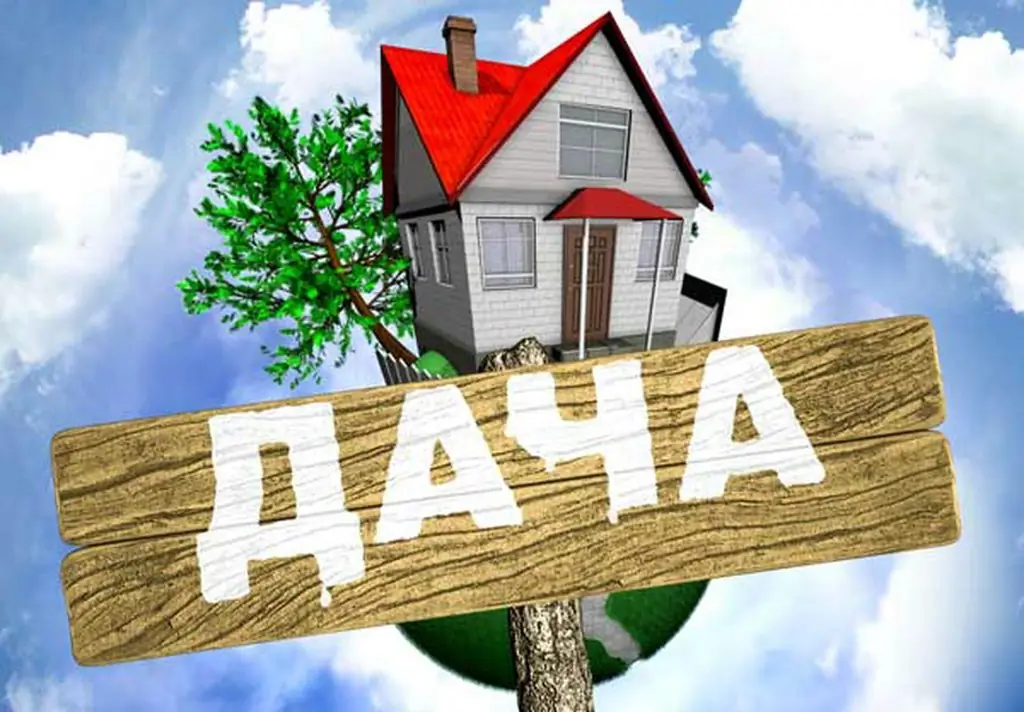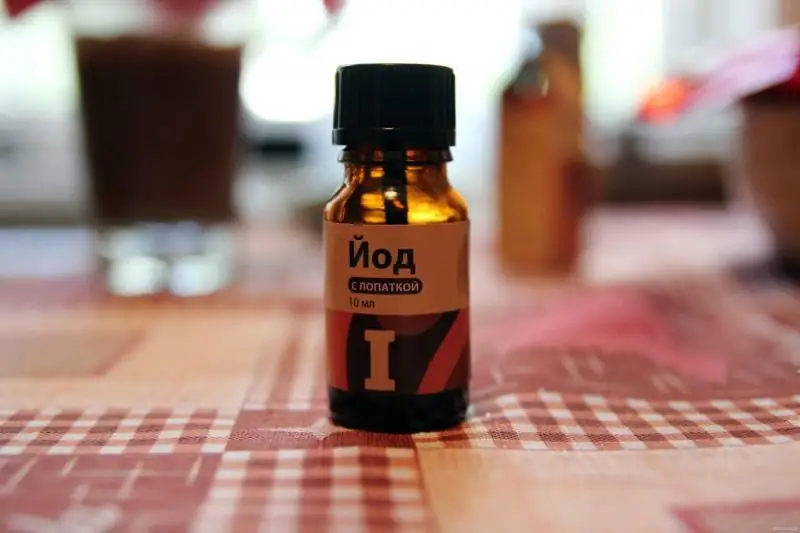
Table of contents:
- Author Bailey Albertson [email protected].
- Public 2023-12-17 12:53.
- Last modified 2025-01-23 12:41.
Fighting tomato diseases

Agree, we all love tomatoes. These delicious vegetables are firmly gaining first place on the festive and everyday tables. We love to eat them fresh, in the form of salads, pickle them in jars for the winter, make tomato juice and ketchup. It is impossible to imagine full-fledged dishes of any cuisine without tomatoes.
But in order for juicy, ripe tomatoes to appear on your table, you need to work hard. Every gardener knows how much time and effort you need to spend on caring for tomato bushes. Indeed, like all cultivated plants, tomatoes are susceptible to disease.
In this article, we will look at all the diseases that can harm your crop and show you how to deal with them, or even avoid their occurrence.
Content
- 1 Alternaria tomato blight
- 2 Cladosporium
- 3 White spot
- 4 Phytophthora
- 5 Top rot of tomatoes
- 6 Stolbur
- 7 Video on tomato diseases and control
Alternaria tomato blight
Both the leaves and the fruits of the plant are the targets for this disease. First of all, the lowest leaves located above the soil surface are covered with spots. These spots have a brown color and a noticeable relief, they spread over the entire surface of the leaf plate, increase in size, and the leaf dies over time.
Most of all, fruits are susceptible to infection, on which cracks have formed due to frequent watering. In hot dry seasons, if your tomato garden has been left without watering for some reason for a long time, you should not water it too abundantly at a time: this will lead to cracking of the tomato surface. A combination of rains and droughts also contributes to the appearance of brown spot (this is another name for Alternaria).

In case of infection, the infection manifests itself at the base of the fetus in the form of round spots. The loss of abundant dew contributes to the appearance of a velvety structure on these blotches. In the process of spreading, the disease affects the entire plant as a whole, including infecting the seeds, which subsequently cannot be harvested.
In order to prevent Alternaria, first of all, varieties resistant to this disease must be used for planting. Do not forget about crop rotation: just like cruciferous plants, nightshades should not be planted outdoors in the place where you had a tomato garden last year.
Destroy plant residues in the soil after harvest. After the plants are planted, spray them with 1% Bordeaux mixture every 2 weeks. For the entire vegetative period, the number of sprays should be 4-5 times. 8 days after the last spraying, you can harvest.
Tomato bushes in planting should be at a sufficient distance from each other - about 40 cm. Do not allow the beds to thicken. Excessive watering will lead to waterlogging of the soil, which contributes to the appearance of Alternaria. If you grow tomatoes not outdoors, but in a greenhouse, ventilate it regularly.
Cladosporium
This disease is also called brown spot and leaf mildew. It is especially dangerous for nightshades planted in closed ground, for example, in a greenhouse or greenhouse.
Cladospariosis mainly affects only the leaves, and is not dangerous for the rest of the plant. The spread of infection runs from the lower leaves to the upper ones. The leaves are covered with brown spots that grow and fill the entire plate. Completely infected leaves dry up and crumble. Stems, fruits and inflorescences are not susceptible to infection.
To stop the development of brown spots, remove the infected leaves as soon as you notice the appearance of brown mold on them. Positive results can be achieved by spraying the plants with a 0.4% copper oxychloride solution every 10 days. You need to stop spraying about 20 days before harvesting.

When growing tomatoes in a greenhouse, keep an eye on the humidity - it should not exceed 60%. Also, the night and day temperatures inside the greenhouse should not differ sharply. Remember to remove all plant debris from the soil after the crop is harvested.
White spot
This fungal disease spreads on the site due to poor-quality seedlings. It can be detected by the following symptoms: the leaves of the lower level are covered with dirty white spots, on which the black dots of the fungus pycnidia are distinguishable. Infected spots are outlined with a black rim. They quickly spread from bottom to top over all leaves, petioles and stems. On tomato fruits, white spot, as a rule, does not appear.
This infection is especially active in hot and damp weather, both outdoors and in greenhouses. Infected leaves should be removed immediately as they are harmful to both the plant and the soil.

To avoid the appearance of white spot on your tomatoes, use already known methods:
- Choose infection-resistant varieties;
- Try to grow seedlings yourself (white spot does not affect tomato seeds);
- Buy seedlings only from reputable suppliers;
- When buying, pay attention to each specimen, and discard all bushes, on the leaves of which there are any spots;
- Stick to a traditional crop rotation, change planting every year;
- Remove all plant residues from the soil after harvest and destroy them;
- Spray regularly with chemicals such as fungicides;
- Don't over-water your garden beds.
Phytophthora
Phytophthora is popularly called brown rot. This disease belongs to fungal infections, and develops in conditions of constant high humidity, for example, with frequent precipitation during the growing season of the plant. Brown rot can affect the entire plant: roots, stems, inflorescences, fruits, leaves, paralyzing the growth of the bush and destroying the entire crop. Infected fruits rot without even entering the ripening period.
Phytophthora gets to the beds with tomatoes from potato plantings. You can spot it by noticing brown spots on the top of the leaves and white bloom on the bottom. From leaf plates, brown rot is thrown onto fruits and inflorescences. The surface of the tomato is covered with brown spots, the fruit first hardens, then becomes soft, turns brown.
The activity of brown rot increases with the fall of fog and abundant growth, as well as with sudden changes in temperature.

To avoid late blight on your tomatoes, choose a higher location for the garden. The soil should not be too wet. Feed the planted plants with potash and ash. When growing seedlings, use peat pots, they will provide the root system with the necessary nutrition. Try not to make beds of tomatoes in the immediate vicinity of potato plantings.
You should also take care of the seeds that you will plant. Dip them in a 1% solution of potassium permanganate for 20 minutes, then rinse and dry. This will help avoid late blight.
When growing seedlings, use a 1% solution of Bordeaux liquid for spraying, 4-5 times during the growing season. 8 days before harvest, apply the last spray.
Unripe fruits can be saved from late blight by applying early harvesting of fruits from the infected area and heat treatment for 2 minutes at a temperature of 60 degrees. Completely unripe, green tomatoes should be exposed to much lower temperatures (of the order of 40-45 degrees) for 4 hours. Discard diseased fruits and carefully remove all plant debris from the site.
A mixture of garlic and potassium permanganate helps well in the fight against late blight. Take 10 liters of water, 1.5 g of potassium permanganate and half a glass of garlic pulp, pre-wiped. The seedlings should be sprayed with this mixture 15 days after planting in the ground. Spray again after 10 days. Then water the tomatoes with a solution of potassium chloride, adding 40 drops of iodine to it, at the rate of 500 ml of liquid for each under the root of each plant.
Top rot of tomatoes
There are 2 forms of this disease. The first develops due to sudden changes in temperature. If the temperature rises to 30 degrees, and in the root layer there is a lack of calcium and an excess of mineral nitrogen as top dressing, the disease begins to develop: on an unripe fruit, at the base, a watery spot appears, which grows towards the middle and turns black over time. The infected fruit ripens and turns red earlier than others, but such tomatoes are not suitable for food or for processing. This type of disease affects the early harvest, which is formed on the clusters located close to the soil.
The second form of the disease is caused by infection with infectious bacterial rot. First of all, a watery spot appears on the top of the fruit, after which it turns brown and moist. The affected tissues smell unpleasant. The infection progresses with increasing air temperature. In the fall, it does not disappear after the affected, but apparently healthy fruits are harvested.

To avoid top rot infestation, carefully adjust the nitrogen and calcium content of the soil. It is enough to add about 5 kg of calcium nitrate to significantly reduce the possibility of tomato disease in the season of high temperature fluctuations. Observe the crop rotation: in the place of the previous planting, tomatoes can be planted no earlier than after 3 years.
Use pickled seeds to grow seedlings. To do this, keep them for 24 hours in a solution of 0.2% copper sulfate or 0.5% solution of potassium permanganate, and then dry them.
When growing tomatoes in a greenhouse or greenhouse, spray them with a 0.4% calcium chloride solution. Destroy all plant debris from the soil after harvest, do not send rotten tomatoes to compost pits.
On the open ground, beds with tomatoes in dry hot weather should be watered often, but not abundantly, so that a putrefactive infection is not provoked.
Pillar
The carriers of this disease are leafhoppers. The disease is fixed inside the soil, on the rhizomes of perennial weeds, and from there it spreads to all plants of the Solanaceae family - tomatoes, peppers, eggplants. The weeds most often affected by the stolbur are dope, black nightshade and white gauze.
You can identify this disease by noticing the formation of axillary shoots on the plant, reduction of leaves in size, greening of flowers, or chlorosis on the leaf blade. Stolbor is especially active in hot dry weather.
The same sign of the pillar is the folding of leaves along the growth. The leaf plate acquires a purple color, which over time covers the entire top of the bush. The fruits do not turn red completely, their pulp is tough, with an unpleasant taste. It is not recommended to eat such tomatoes.

To prevent the stolbur from ruining your crop, give preference to varieties that are resistant to this disease and completely destroy the vectors - leafhoppers. This will require deep tillage in the fall, during the development of insect larvae.
Planting seedlings early, especially with a short growing season, will also help fight disease. And, of course, regular weed management and removal of all plant residues from the soil are necessary measures to achieve a good, healthy harvest.
Video about tomato diseases and control
As you can see, tomatoes require a lot of attention. Like any cultivated plant that is grown for subsequent consumption, the tomato can be quite whimsical. In any case, using the recommendations and tips outlined in this article, you can achieve excellent results, your harvest will delight you and your family. Healthy, strong tomatoes will serve not only as an independent dish or addition to salad, but also as preservation for the winter. You can enjoy your harvest all year round!
Recommended:
How To Pinch Tomatoes Correctly In A Greenhouse And Open Ground (video, Photo, Diagram), Which Varieties Do Not Require Pinning

Practical advice for pinching tomatoes of different varieties. Pinion schemes for the formation of a bush in one, two and three stems
How To Plant Dill And Parsley In The Country And How To Grow Them Correctly, Video

Useful tips for planting and growing dill, parsley. Seed preparation, correct soil treatment
How To Clean And Cut Fish Correctly: Methods Of Fillet Processing, What To Do To Prevent Scales From Flying, How To Gut And Other Recommendations + Video

How to clean fish properly. How can you cut it. Processing methods for different varieties. Step by step instructions. Photo and video
How To Clean Peanuts From Husks And Shells, How To Store Them At Home + Video And Photos

How to properly store peanuts at home and how to quickly peel them from husks and shells using simple methods
How To Remove Iodine From Clothes And Other Surfaces, Than To Wash It From The Skin, Various Methods And Means + Video And Photo

How to remove iodine from different fabrics, wash stains from furniture, body and other surfaces. Effective ways with instructions for use with photos and videos
